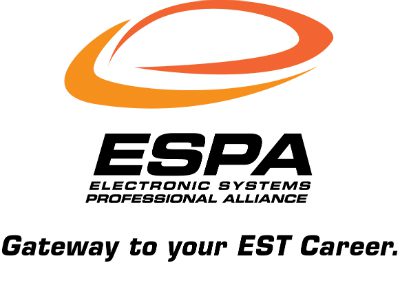The ESPA program has been growing rapidly, with participation up 240 percent since 2014. August of this year was its biggest year to date, with just under 100 students taking the certification exam (and a 73 percent pass rate). The majority of these students are taking comprehensive EST courses at post-secondary tech schools, which has always been the most popular way to earn ESPA certification and get into the industry.
However, we are now seeing a couple of delivery models emerge which are more specialized, more accessible, and very well suited for EST training:
Fast Track Adult Education for Career Changers
The ESPA has two of these programs happening now, and several more expressing interest.
Here is how they work: As more funding becomes available at the state level to train/retrain individuals for jobs related to technology, schools are learning about the huge demand for entry-level technicians in the electronic systems industry and seeking out curriculum and certification in this area.
ESPA provides schools with a turnkey solution to teaching EST basics and offering an industry-recognized credential that supports work in any of the career verticals.
Tuitions are often paid by a local or regional workforce development agency, and classes are generally offered a couple evenings a week for about 10 weeks. Students get the ESPA fundamentals, some hands-on training in termination and testing, and sit for the exam.
Some states even allow employers to send new employees for this training and then get reimbursed for the fee after that individual remains employed for a certain length of time. This is a great way for a career changer to get their foot in the door, or a new employee to train at night while working during the day.
The IT/EST Hybrid Program
Computer tech and networking skills are a necessity in our industry, and a training program that combines IT and EST together is really positioning a new technician for a great career. The ESPA is now seeing this at both the high school and post-secondary level.
Some states, like Indiana, have even formalized this by specifying an approved career center pathway as “Electronics and Computer Tech,” recognizing EST as a 21st-century career, and listing ESPA as an approved credential.
Related: 4 Network Troubleshooting Lessons for Newbie Installers
High school seniors are going straight to work after graduation, advancing rapidly, and moving up to take on more responsibilities within their companies.
In January, Orange County Technical College in Orlando will launch an exciting new program; students who have already completed two semesters of computer tech and networking will be offered a full semester of Electronic Systems Integration. Just imagine how many jobs will be waiting for these young people!
Learn What's Available in Your State
Both of these training scenarios have huge potential nationwide. Virtually every state has some kind of initiative that provides resources for 21st-century job training. Look into what is happening in your state.
There may very well be an opportunity to bring a school on board to provide ESPA training that is paid for by workforce development funding.
We also encourage you to look at IT programs at career centers and tech schools that could be enhanced with some basic technician training. These students would then be ideally suited to come in as entry-level technicians and then immediately start putting their IT skills to work.
For more info on how these programs might work in your market, and to learn more about ESPA in general, visit here or contact the ESPA at [email protected].







